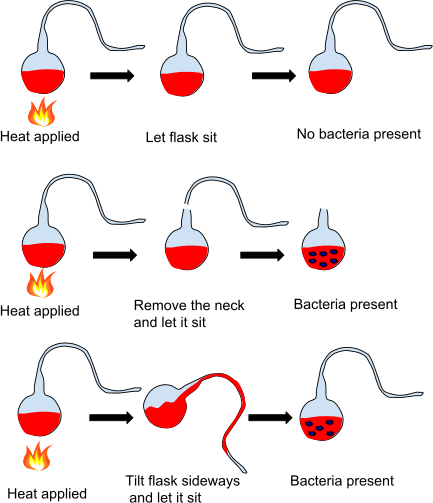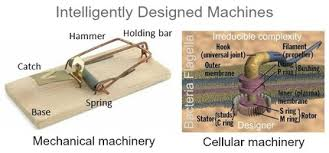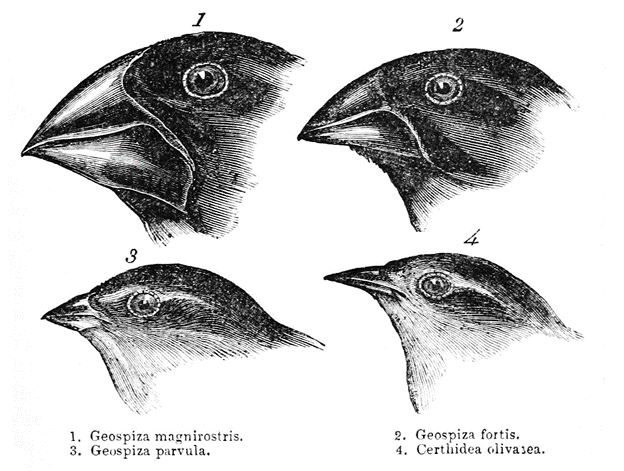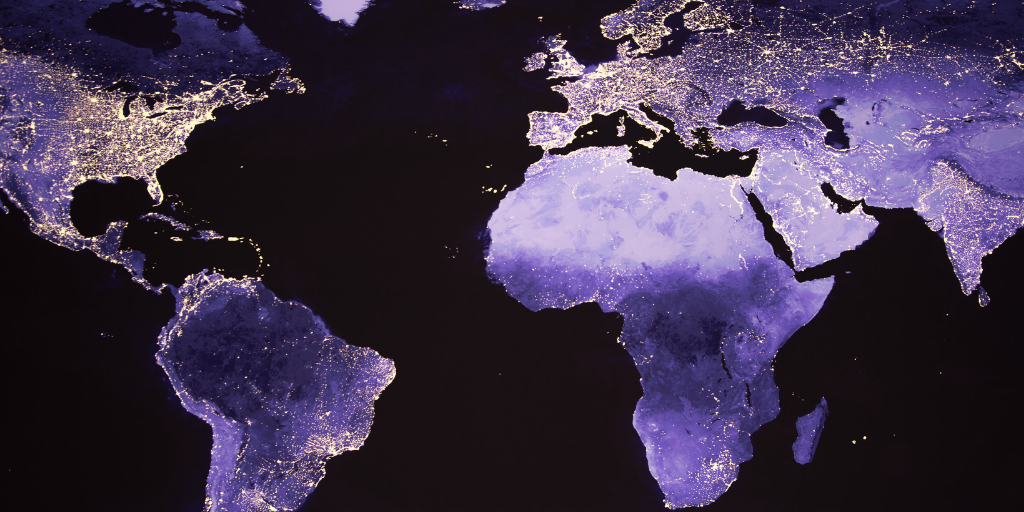Demonstrating five reasons naturalistic, biological evolution didn’t happen, and why evolution is impossible.
Summary
Naturalistic, biological evolution is fatally flawed and ultimately impossible. The reasons why evolution is impossible are: life cannot arise from non-life, DNA cannot create new information, transitional fossils are missing from the fossil record, irreducible complexity blocks gradual change, and the evidence for evolution is ambiguous. Neo-Darwinian evolution is broken as a theory, but God’s Word in Genesis remains as the true account of origins.
Overview
Naturalistic, biological evolution didn’t happen. There are at least five reasons we know it didn’t occur, including the impossibility of abiogenesis, knowing that DNA does not create itself, by seeing the fossil record doesn’t support the theory, in noticing that irreducible complexity militates against it, and finally recognizing that supposed evidence for evolution is ambiguous. In short, evolution, as a scientific theory, is broken.
Biological evolution is dogma in Western culture. Since Charles Darwin published The Origin of Species in 1859, evolutionary theory has infiltrated and overtaken the scientific establishment. Any non-Darwinian in the sciences who publicly challenges the various forms of Darwinism is met with derision and ostracism.
Don’t believe it? Check out the documentary, Expelled: No Intelligence Allowed.
The main problem with biological evolution is its complete deficiency as a theory. It cannot overcome even the most basic challenges. In this post, I aim to present five fatal problems with biological evolution from a naturalistic (no God) perspective. My goal is to show how evolution is impossible in an atheistic universe. For brevity’s sake, I use evolution and biological evolution interchangeably.
Biological Evolution: Defined
Jonathan Sarfati, PhD (Chemistry), defines evolution in this way…
“Evolution is a deduction from this assumption, and it is essentially the idea that things made themselves. It includes these unproven ideas: Nothing gave rise to something at an alleged “big bang, non-living matter gave rise to life, single-celled organisms gave rise to many-celled organisms, invertebrates gave rise to vertebrates, ape-like creatures gave rise to man, non-intelligent and amoral matter gave rise to intelligence and morality, and man’s yearnings gave rise to religions, etc.”
According to Sarfati, biological evolution demands that all things make themselves. In a naturalistic and evolutionary worldview, God does not intervene to start the process nor direct it to its final result. Instead, evolution is an atheistic creation narrative from start-to-finish. Here are five reasons we know it didn’t happen.
Fatal Flaw #1: Life Does Not Arise from Non-Life
Evolution cannot start from nothing. To be coherent, evolutionists must account for the origin of life: they must explain how life began in the first place. For centuries, people thought life could just arise by happenstance. This false theory was known as spontaneous generation or abiogenesis.
Louis Pasteur disproved spontaneous generation in the 19th century – ironically, the same year Darwin’s Origin of Species was published (1859). Pasteur aimed to cast doubt on spontaneous generation from the outset. According to General Microbiology at Boundless,
“Louis Pasteur’s 1859 experiment is widely seen as having settled the question. In summary, Pasteur boiled a meat broth in a flask that had a long neck that curved downward, like a goose. The idea was that the bend in the neck prevented falling particles from reaching the broth, while still allowing the free flow of air. The flask remained free of growth for an extended period. When the flask was turned so that particles could fall down the bends, the broth quickly became clouded. In detail, Pasteur exposed boiled broths to air in vessels that contained a filter to prevent all particles from passing through to the growth medium, and even in vessels with no filter at all, with air being admitted via a long tortuous tube that would not allow dust particles to pass. Nothing grew in the broths unless the flasks were broken open, showing that the living organisms that grew in such broths came from outside, as spores on dust, rather than spontaneously generated within the broth. This was one of the last and most important experiments disproving the theory of spontaneous generation.”

Pasteur proved what had been suspected for centuries earlier: life cannot arise from inanimate material. And despite many foolhardy attempts to prove abiogenesis, they always fail. The reason is simple: biological life only arises from other biological life.
Here’s the issue: naturalistic biological evolution requires spontaneous generation to get started. Whether it starts on Earth or on another planet (panspermia), evolution cannot happen without abiogenesis at some point in time. The disproven theory of spontaneous generation is the same theory upon which evolution depends. Some evolutionists even admit they can’t explain how life began. And it’s one reason we know biological evolution didn’t happen. But that’s not the only reason.
“In the beginning, God created the heavens and the earth.” Genesis 1:1
Fatal Flaw #2: Natural Selection Does Not Produce Information
Another reason we know molecules-to-man, naturalistic evolution didn’t happen relates to DNA. Nearly every organism contains deoxyribonucleic acid or DNA. DNA is the master plan for organisms on the planet. According to the National Human Genome Research:
“DNA, or deoxyribonucleic acid, is the hereditary material in humans and almost all other organisms. Nearly every cell in a person’s body has the same DNA…The information in DNA is stored as a code made up of four chemical bases: adenine (A), guanine (G), cytosine (C), and thymine (T). Human DNA consists of about 3 billion bases, and more than 99 percent of those bases are the same in all people.”
Just as a high-rise condo building cannot be built without blueprints, neither can a human being be constructed without DNA. Building a human requires a blueprint equivalent, DNA. Without DNA, we don’t physically exist.
Traditionally, evolutionists have argued that natural selection “creates” the diversity in our DNA. Small, natural mutations over millions of years create changes in our genome that ultimately turn single-celled organisms into scientists. But here’s the problem. That mechanism hasn’t been proven. In fact, the opposite is true.
Dr. Lee Spetner taught information and communication theory at Johns Hopkins University. Spetner wrote (Refuting Evolution, p. 126), “But in all the reading I’ve done in the life sciences literature, I’ve never found a mutation that added information. All point mutations that have been studied on the molecular level turn out to reduce the genetic information and not to increase it. The NTD [neo-Darwinian theory] is supposed to explain how the information of life has been built up by evolution. The essential biological difference between a human and a bacterium is in the information they contain. All other biological differences follow from that. The human genome has much more information than does the bacterial genome. Information cannot be built up by mutations that lose it. A business can’t make money by losing it a little at a time.”
According to Spetner, there’s a critical dilemma for naturalistic evolutionists: there is no known mechanism by which organisms create new information in DNA. And that’s a requirement for evolution. Sure, mutations happen. Sickle-cell anemia, cystic fibrosis, and Tay-Sachs disease show that genetic mutations occur. But even evolutionists haven’t been able to find beneficial, consecutive mutations that turn frogs into princes. Never. And it’s another reason we know atheistic evolution didn’t happen. But there’s another reason.
“For by him all things were created, in heaven and on earth, visible and invisible, whether thrones or dominions or rulers or authorities—all things were created through him and for him.” (Colossians 1:16)
Fatal Flaw #3: Transitional Forms Absent from the Fossil Record
Traditional evolution assumes transitional forms. In evolution, transitional forms are the hypothetical creatures that exist as links between various species. Darwin himself acknowledged the deficiency, but he expected the fossil record to vindicate him in time. Darwin wrote in the Origin of Species, “Why then is not every geological formation and every stratum full of such intermediate links? Geology assuredly does not reveal any such finely graduated organic chain; and this, perhaps, is the most obvious and gravest objection which can be urged against my theory.”
Unfortunately for Darwin’s theory, the geological record still hasn’t caught up to his theory. This is a well-known fact for those who study the fossil record. Some evolutionists have even admitted as much. One such time was when the late Colin Patterson, Senior Paleontologist at the British Museum, wrote:
“I fully agree with your comments on the lack of direct illustration of evolutionary transitions in my book. If I knew of any, fossil or living, I would certainly have included them. You suggest that an artist should be used to visualise such transformations, but where would he get the information from? I could not, honestly, provide it, and if I were to leave it to artistic licence, would that not mislead the reader?”
Take note: a leading evolutionist admitted transitional forms are missing from the fossil record. Scientists pride themselves on evidence-based research, but evolutionary theory lacks the essential evidence required in the fossils. This is a glaring issue with evolution, and it’s not the only problem.
“The fool says in his heart, “There is no God.” They are corrupt, they do abominable deeds; there is none who does good.” (Psalm 14:1)
Fatal Flaw #4: Irreducible Complexity Prevents New Feature Development
Another reason we know evolution didn’t happen relates to irreducible complexity. Michael Behe, the first proponent of the concept, wrote, “An irreducible complex system is one that requires several closely matched parts in order to function and where removal of one of the components effectively causes the system to cease functioning.”
So how does irreducible complexity work in real life? According to ideacenter.org…
“As a simple example of irreducible complexity, Behe presents the humble mousetrap. It contains five interdependent parts which allow it to catch mice: the wooden platform, the spring, the hammer (the bar which crushes the mouse against the wooden base), the holding bar, and a catch. Each of these components is absolutely essential for the function of the mousetrap. For instance, if you remove the catch, you cannot set the trap, and it will never catch mice, no matter how long they may dance over the contraption. Remove the spring, and the hammer will flop uselessly back and forth-certainly not much of a threat to the little rodents. Of course, removal of the holding bar will ensure that the trap never catches anything because there will again be no way to arm the system.”
There are many examples of irreducible complexity in nature. In his book Darwin’s Black Box, Behe provides several examples, including the flagellum motor in cells and blood clotting in humans. Behe explains the enormous complexity in blood clotting in an excerpt from his book:
“As seen just by eye, clotting seems like a simple process. A small cut or scrape will bleed for a while and then slow down and stop as the visible blood congeals. However, studies over the past fifty years have shown that the visible simplicity is undergirded by a system of remarkable complexity. (Halkier 1992) In all, there are over a score of separate protein parts involved in the vertebrate clotting system.
The concerted action of the components results in the formation of a weblike structure at the site of the cut, which traps red blood cells and stops bleeding. Most of the components of the clotting cascade are involved not in the structure of the clot itself, but in the control of the timing and placement of the clot. After all, it would not do to have clots forming at inappropriate times and places. A clot that formed in the wrong place, such as in the heart or brain, could lead to a heart attack or stroke. Yet a clot that formed even in the right place, but too slowly, would do little good.
The insoluble web-like fibers of the clot material itself are formed of a protein called fibrin. However, an insoluble web would gum up blood flow before a cut or scrape happens, so fibrin exists in the bloodstream initially as a soluble, inactive form called fibrinogen. When the closed circulatory system is breached, fibrinogen is activated by having a piece cut off from one end of two of the three proteins which comprise it. This exposes sticky sites on the protein, which allows them to aggregate. Because of the shape of the fibrin, the molecules aggregate into long fibers that form the meshwork of the clot.
Eventually, when healing is completed, the clot is removed by an enzyme called plasmin. The enzyme which converts fibrinogen to fibrin is called thrombin. Yet the action of thrombin itself has to be carefully regulated. If it were not, then thrombin would quickly convert fibrinogen to fibrin, causing massive blood clots and rapid death. It turns out that thrombin exists in an inactive form called prothrombin, which has to be activated by another component called Stuart factor. But by the same reasoning the activity of Stuart factor has to be controlled too, and it is activated by yet another component. Ultimately the component that usually begins the cascade is tissue factor, which occurs on cells that normally do not come in contact with the circulatory system.
However, when a cut occurs, blood is exposed to tissue factor, which initiates the clotting cascade. Thus in the clotting cascade, one component acts on another, which acts on the next, and so forth. I argued the cascade is irreducibly complex because, if a component is removed, the pathway is either immediately turned on or permanently turned off. It would not do, I wrote, to postulate that the pathway started from one end, fibrinogen, and added components, since fibrinogen itself does no good. Nor is it plausible to start even with something like fibrinogen and a nonspecific enzyme that might cleave it, since the clotting would not be regulated and would be much more likely to do harm than good.”
Behe belabors the point that blood clotting is nearly mind-bogglingly complex. And to remove even one component in its complexity makes it an unusable system. It takes a master’s degree in creative writing to imagine a way in which blood clotting could develop in a naturalistic world, to the point that it’s unreasonable. In short, the many instances of irreducible complexity we find in nature are proof that we know evolution did not happen. Though irreducible complexity militates against evolution, the final fatal flaw in evolutionary theory is perhaps the greatest.

“In the beginning was the Word, and the Word was with God, and the Word was God. He was in the beginning with God. All things were made through him, and without him was not any thing made that was made.” (John 1:1-3)
Fatal Flaw #5: “Evidence” for Evolution is Ambiguous
The last fatal flaw for evolutionary theory is the supposed evidence for evolution. Evolution is sometimes simplistically defined as “change over time.” Organisms change or “evolve” over time due to natural selection. The problem with that simplistic definition is hardly anyone disagrees with it. Organisms do change over time.
For instance, one of the most iconic “evidences” for evolution are Darwin’s Finches. These are the birds Charles Darwin catalogued on his voyage on the HMS Beagle in the 1830s. Darwin demonstrated differences between the various finches in the Galápagos Islands. Some finches had one kind of beak, which was suitable for their environment, while others had another kind of beak, which was suitable for their environment. Darwin took that example, and others like it, as an example of evolution.

The problem is it’s not. Though there were differences between the finches on the Galápagos Islands, the variations were within species. Differences between the finches do nothing to demonstrate the kind of change required in particles-to-people evolutionary theory. The evidence is completely ambiguous. And because it’s ambiguous, it’s not an example of evolution.
The finch example can be explained just as easily from a biblical creation perspective. The finches merely reproduced after their kind with variation. At some point, some finches had an adaptation that was better suited for the environment. The finches with that adaptation reproduced while the other finches died off. Only those finches with the more suitable adaptation survived. Finches didn’t become dinosaurs. Finches didn’t morph into kangaroos. Finches produced finches that produced more finches with slight variation. That’s it.
The reason this is a fatal flaw for evolution is that evolutionists cannot point to one proven species-to-species transition in 160+ years of post-Darwinian evolutionary research. Not one. Their theory aims to show how molecules became men. Not only have evolutionists not demonstrated one time a species became a new species, but every example they give of change is ambiguous. That’s a fatal flaw to the theory.
“Beloved, do not believe every spirit, but test the spirits to see whether they are from God, for many false prophets have gone out into the world.” (John 4:1)
Conclusion: Evolution…Didn’t Happen
Evolution has many problems, but the main problem is that it didn’t happen. The best evidence for naturalistic evolution is ambiguous, which is to say, there is no evidence. And that doesn’t even account for all of the other issues related to abiogenesis, irreducible complexity, the fossil record, and DNA. In short, evolution as a naturalistic scientific theory is broken.
However, the one thing that is not broken is God’s word (John 10:35). We know how biological life arose because God tells us. He created creatures by kinds, and they reproduced after their kinds (Genesis 1:25). Unlike in evolutionary theory, amoebas never became astronauts. But man and woman were made in the image of God. And they can be redeemed by Jesus, the Son of God.
For more information, check out How To Be Saved.
Resources
- Answers in Genesis: Evolution
- Jerry Bergman: Why the Miller–Urey Research Argues Against Abiogenesis
- Casey Luskin: Problem 5: Abrupt Appearance of Species in the Fossil Record Does Not Support Darwinian Evolution
- IdeaCenter.org: Irreducible Complexity: The Challenge to the Darwinian Evolutionary Explanations of many Biochemical Structures







